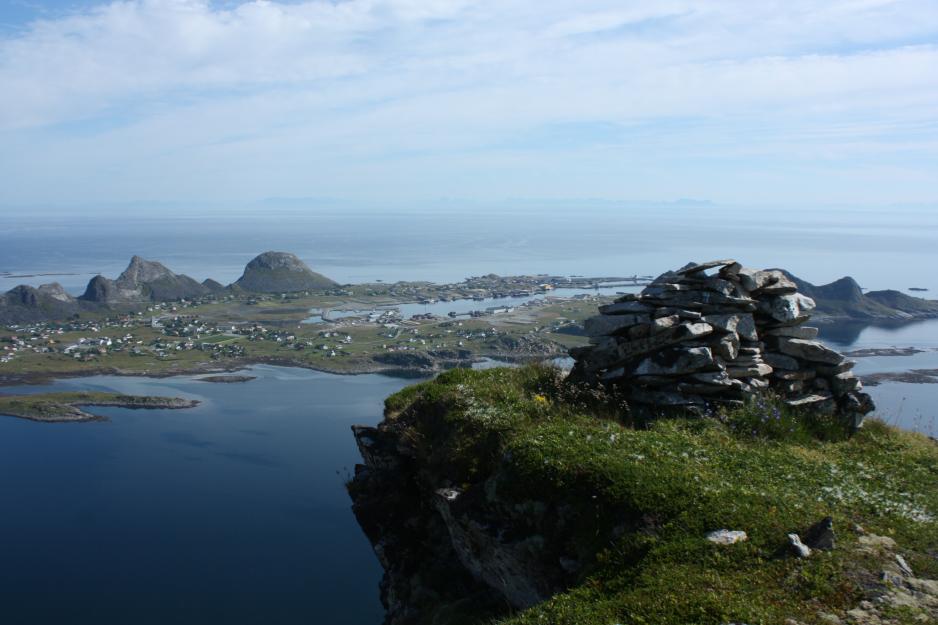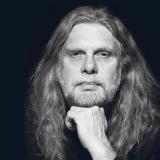The Arctic Paradox

Most Norwegians want to go north, but only on holidays. Picture from Værøy island in the Lofotens: Elisabeth Bergquist
Commentary: I wanted to write about the Arctic paradise. However, words do not follow the strict logic of railway tracks. Any verbal journey meanders past obstacles and shut gates, finding their way along new and undiscovered paths. This time, the paradise collided with the paradox.
The Arctic paradox.
The term is not a part of everyday speech as this flows through the radio every day. The only deviation from overly Oslo-focused analyses appear almost like random exotic sidesteps, a kind of legally imposed interest in what goes on outside the capital. Only the meteorologists are true to their national project.
You are all welcome.
Right now, however, the High North – or more precisely: Northern Norway – is at the center of media attention because the traditional summer holiday trips going to the south ended in a pandemic.
Only the meteorologists are true to their national project.
Thus, the North is at the top of the bucket list for people who originally wanted to spend their holidays in Paris, if I am to believe those who speak all over the media about anything and nothing, tending to gather around the same explanations and predictions.
And by all means; You are all welcome, every single one.
We have already put up our “No camping” signs, often with capital letters, as a copy of Donald Trump’s twitter feed. The signs are not new this year, even though there might be more of them now, when even Norwegians who usually are exceptionally faithful to Gran Canary have acquired a mobile home and plan to go north this summer, if urban conversations are anything to go by.
It that were to happen, if we are to be flooded by a stream of Norwegian holidaymakers, we are probably facing the Arctic paradox as it is described in a research report presented just the other day.
Business Index North, which will hardly be featured in the six o’clock news, nor in North Norwegian papers, truth be told, is an ongoing research project about and from the High North. It gives us both insight and knowledge of economy as well as in live lived in the Arctic.
Local population
In the latest BIN report, one of the main points is that economic growth in the North, and its analyses covers most countries in the Arctic, does not improve the economic situation for the local population.
This, says Nordland County Councilor Tomas Norvoll (Labour), is an Arctic paradox. The term has been used by many, and is primarily characterized by the values created in the High North not remaining in that same High North.
The Arctic paradox is the very antonym to the American moralism; “What happens in Vegas, stays in Vegas.”
Nor does the northern abundance and affluence bring a halt to the demographic decline that characterizes the same geographical areas.
Even State Secretary of the Norwegian MFA Audun Halvorsen, a politician often bringing wise analyses to the table, has commented on the report’s findings and brings this recommendation:
“People who work, live and raise their children in the Arctic deserve to live in a modern society. We must keep investing in infrastructure, we need good schools and universities, and of course also diverse culture opportunities.”
He is quite right.
A geopolitical challenge
As a people, we are to solve many of the national state’s challenges, not just the economic ones. We are also people in a geopolitical area where East meets West.
Thus, the report’s chapter about social challenges may be the most alarming one.
As a people, we are to solve many of the national state’s challenges, not just the economic ones.
“Special attention should be given to […] deep underlying societal challenges such as jobs available, poverty and access to mental health services. Arctic communities experience a fast demographic change with decreasing population figures for children and young adults, and an increasingly ageing population, which poses a threat to sustainable, functioning and flexible future communities.”
So if the expected flood of sun-chasing Norwegians looking for cheap booze instead go north this summer, that will not necessarily contribute to economic growth that leads to turning the demographic development.
Both State Secretary Audun Halvorsen and Nordland County Councilor Tomas Noroll point at education and innovation as keys to solving the Arctic paradox.
However, constructing the modern High North requires the Arctic national states to understand the Arctic paradox. Investing in knowledge and infrastructure will yield significant returns, both economically as well as socially.
And on the opposite side; managing a continued population decline will prove very costly.
This commentary was originally published in Norwegian and has been translated by HNN's Elisabeth Bergquist.

